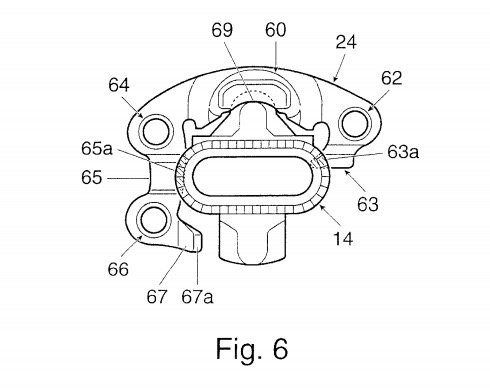I found this picture lurking on the web

which is taken from the SPD patent which resulted in the 'open binding' variant, eg PD-M520. The overlap shows how the cleat is supported from beneath in this pedal. This shows the cleat 'shoulders' may not provide as much support as I supposed in this pedal (they do in others BTW), but the edge of the 'racetrack' opening does provide support. As mentioned upthread this edge is flat in SM-SH51 but chamfered at the sides (almost to a knife edge) in various earlier cleat designs such as SM-SH55.
You can also see the 'kicker ramp' #67a, without which the pedal won't release cleanly once the cleats are a bit worn.
In case you have not seen it (it is on cyclingtips too) this article is interesting
https://www.pinkbike.com/news/the-20-year-history-of-the-shimano-pd-m520.htmlHowever the 'invention of the SPD' is actually the invention of the third 'open' version of the binding. The first (seen on all the early pedals) was superseded by the second version pedals which use the 'bignose' (and bigheel) versions of the cleats eg SM-SH51(v2) (as illustrated above) . PD-M520 etc are the third version, and are certainly the most successful, remaining virtually unchanged for about 20 years.
cheers